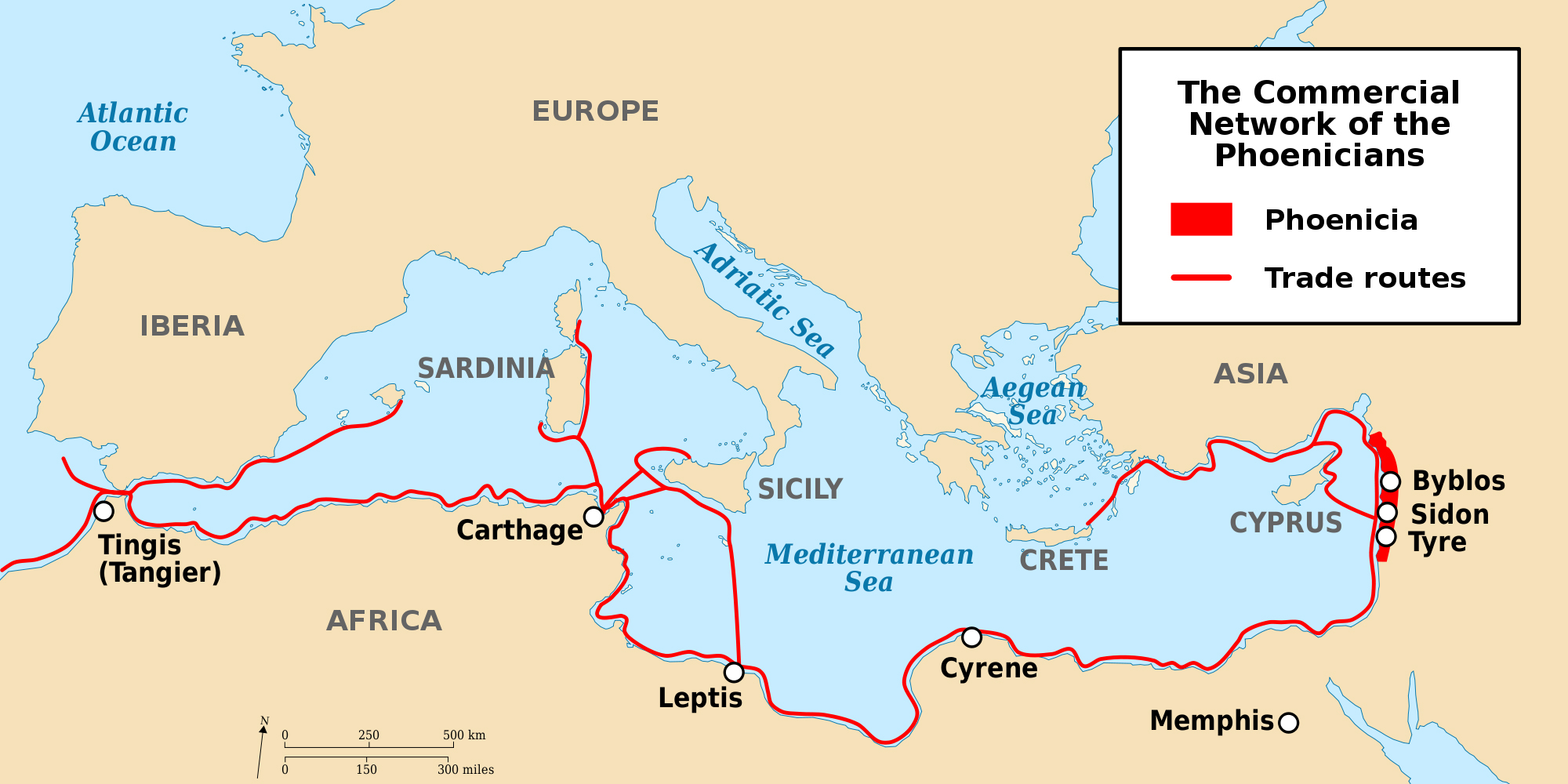The Phoenicians were a Semitic people who called themselves Kinahu, or Canaanites, after the whole region, although their cities were only located on the narrow coastal strip of modern Lebanon. They were known to the Greeks as Phoinikes, the “purple men”, perhaps because one of their most coveted products was the famous Tyrian purple cloth, named for the city of Tyre. The dye for this was made from the Murex sea snail and could range in color from the palest pink to the deepest purple, later made famous by the Roman aristocracy.
Until the end of the Bronze Age (c.1200 B.C.), the sea lanes of the Mediterranean had been dominated by the Mycenaeans of mainland Greece. However, after their demise, seaborne trade in the region came under the control of the Phoenician cities of the Levant. The hinterland that they controlled was confined to a narrow coastal strip extending inland to the mountains and generally less than 20 miles wide. With minimal land area to exploit, the Phoenicians took to the sea, trading and colonizing from the ninth century onward.

Phoenician cities were independent states, although they would sometimes form alliances with each other. Tyre was to become the greatest of these cities, although others, such as Byblos and Sidon, were also very prosperous. These cities were built, whenever possible, on land jutting out into the sea or on offshore islands. High stone walls and towers protected the inhabitants, who lived in two story houses with balconies. The Phoenicians were in fact famous for their skills as builders and craftsmen.
Natural resources formed the basis of many Phoenician industries. On nearby mountain slopes, cedars and pines grew, providing their earliest export, particularly to Egypt, where wood of sufficient length and quality was scarce. The resins also provided oils and unguents for trading. Later, other Phoenician products circulated throughout the Mediterranean.
Their famous purple dye was derived from the shellfish Murex trunculus, and their highly prized textiles were woven from the fleeces of their own sheep and from imported Egyptian flax.
From about 600 B.C. onward, the Phoenicians used their abundant supplies of sand to make glass that was almost colorless, as well as gaudy colored trinkets and amulets, which have been found in regions as far apart as Egypt and the Black Sea.
Source: Oliphant, Margaret. The Atlas of the Ancient World. Simon & Schuster, New York, 1992.